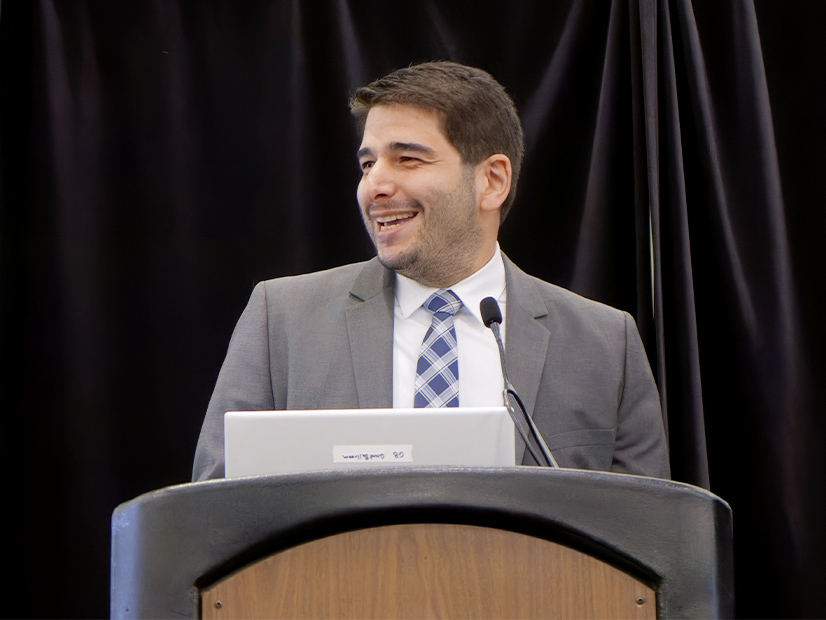
The New York state office created to expedite permitting of large-scale renewable energy development should offer a better accounting of permitting speed, an audit concluded.
The Office of New York State Comptroller on April 24 reported the findings of its review of the New York Office of Renewable Energy Siting.
The audit said that while the process has gotten faster since the formation of ORES, it still is quite slow — 1,333 days from start to finish, on average.
In its reply to the audit, ORES countered that it takes only 239 days on average to issue a siting permit, once an application is deemed complete, and as such, ORES is well within its statutory deadline — 365 days.
The audit countered that highlighting the speedy final phase of the process obscures how slow the process is and prevents a better assessment of the progress the state is making toward its clean energy goals.
The pace of progress in New York is well known if not exactly quantified — developers, lawmakers and regulators alike regularly express the need for speed.
RTO Insider has covered presentations by ORES Executive Director Houtan Moaveni in 2023 and 2024. He generally has focused on how ORES has sped up review of completed applications and increased the number of permits issued. But he also has acknowledged the delaying effect of incomplete applications.
ORES was created in 2020 to help the state meet the goals of its 2019 Climate Leadership and Community Protection Act. Its role is to issue siting permits for land-based renewable energy proposals with capacity of 25 MW or greater; projects rated at 20 to 25 MW can also opt in.
As of April 30, ORES has permitted 15 projects and denied one application; nine applications are designated “incomplete” and four “complete” applications are under review.
None of the 15 permitted projects has been completed and contracts for 10 have been canceled.
ORES is empowered to ignore local laws in pursuit of the state’s climate goals, but it also is charged with ensuring that environmental, social and economic factors are fully considered. As a result, a lot goes into an application, and it takes time to put together a complete and correct application. ORES will bounce an incomplete application back to the applicant.
The audit acknowledges that ORES cannot control an application’s quality or an applicant’s responsiveness but suggests ORES could provide a more realistic accounting of the total time needed to obtain a permit.
Moaveni, in a written reply roughly as long as the audit itself, lauds the performance of his staff as they set up the first office of its kind in the nation. In each review, ORES has met every deadline the Legislature set for it, he said, generally by a wide margin.
Moaveni said ORES concurs there is a need to constantly evaluate the timeliness of its performance but said it already tracks and reports each step of the process.
He added that the state Legislature did not place a time limit on application completion because each project and each developer is different.
“ORES takes no solace in issuing a notice of incomplete application, and is working steadily at improving both tracking of applications and communication with the applicant community on application requirements,” Moaveni wrote.
Transmission Addition
ORES recently has been assigned an expansion of its duties: It now will provide the same type of one-stop shop for environmental review and electric transmission permitting.
The Renewable Action through Project Interconnection and Deployment (RAPID) Act included in the recently approved 2024/25 New York state budget will remove ORES from the state Department of State and embed it in the state’s utility regulator, the Department of Public Service.
It has become apparent since the climate law’s passage that the state’s bulk and local transmission facilities need significant upgrades to handle the increased load that will be placed on them in the clean energy transition, the bill explains, so review of transmission upgrades must be consolidated and expedited.
ORES now will be the Office of Renewable Energy Siting and Electric Transmission, although it appears it will retain the ORES acronym.
The RAPID Act saw pushback for the same reason ORES is unpopular in some places: It will allow unelected state officials to override local regulations, thus undercutting the state’s strong home-rule tradition.
But RAPID was embedded into the state budget, as are many contentious proposals, and the budget vote is an all-or-nothing proposition.



